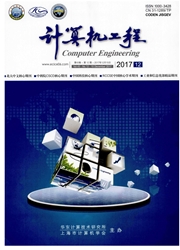

 中文摘要:
中文摘要:
研究者在分析单层网络中个体危机意识对病毒传播的影响时,较少考虑个体危机意识的差异性。为此,将信息传播速率和个人敏感度引入多重网络,提出一种基于危机意识的SIR-SIRV模型。分别采用SIR信息传播模型和SIRV病毒传播模型描述通信网络信息与社会接触网络病毒间的交互传播过程,根据个体自身所处实际环境及病毒传播区域信息,设计个体的最佳疫苗接种策略,以提高疫苗接种的自主性。实验结果表明,该模型可使病毒感染节点密度与免疫节点密度通过自我调节即达到稳态,具有较强的自主性。
 英文摘要:
英文摘要:
In single layer network,the difference of individual crisis consciousness is seldom considered in the study of the influence of individual crisis consciousness on virus transmission. Aiming at this problem,this paper proposes a SIR- SIRV model based on crisis awareness by introducing information dissemination rate and personal sensitivity into multiple networks. It uses SIR and SIRV models to describe the interactive communication process of communication network information and social contact network virus. The best vaccination strategy can be made according to the actual environment of the individual and the information of the region where the virus is transmitted, so as to improve the autonomy of vaccination. Experimental results demonstrate that, the density of infected nodes and immune nodes in this model can be stabilized by self-regulation. Hence, the proposed vaccination model is more autonomous.
 同期刊论文项目
同期刊论文项目
 同项目期刊论文
同项目期刊论文
 期刊信息
期刊信息
